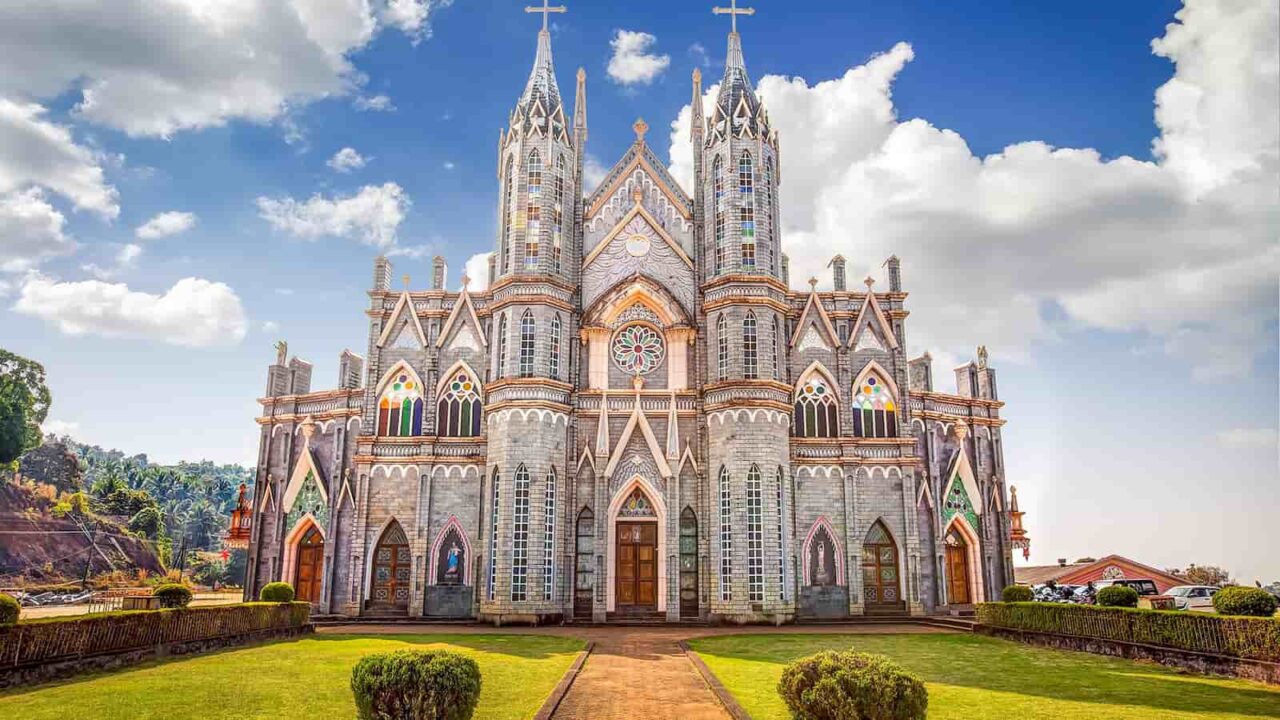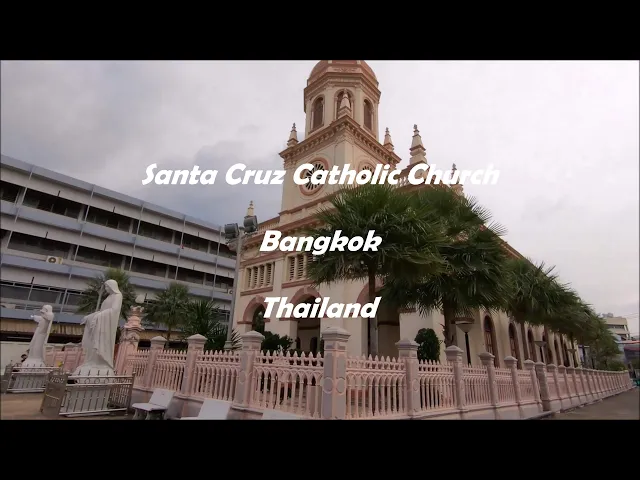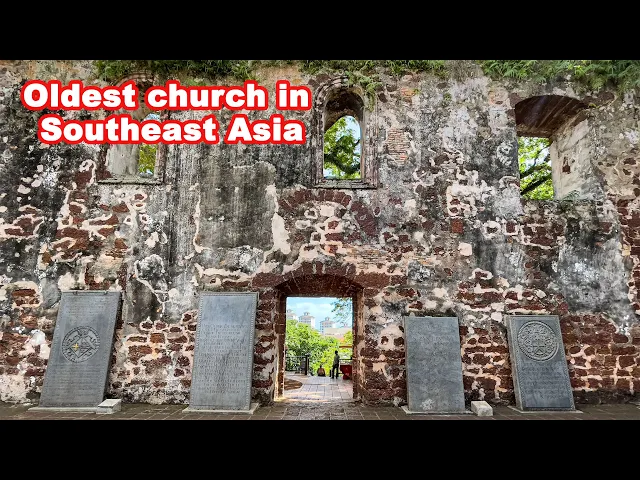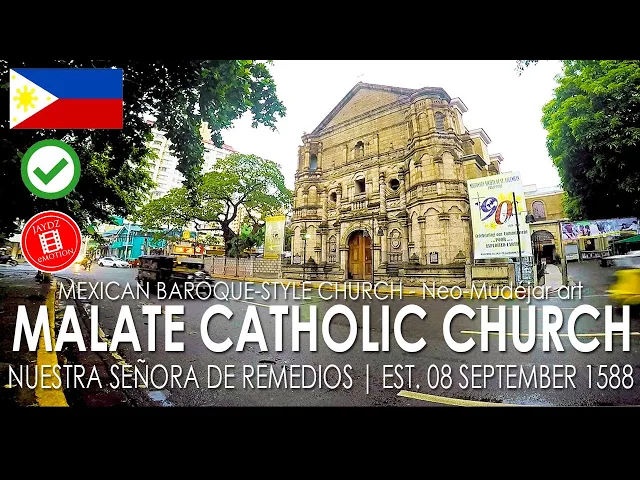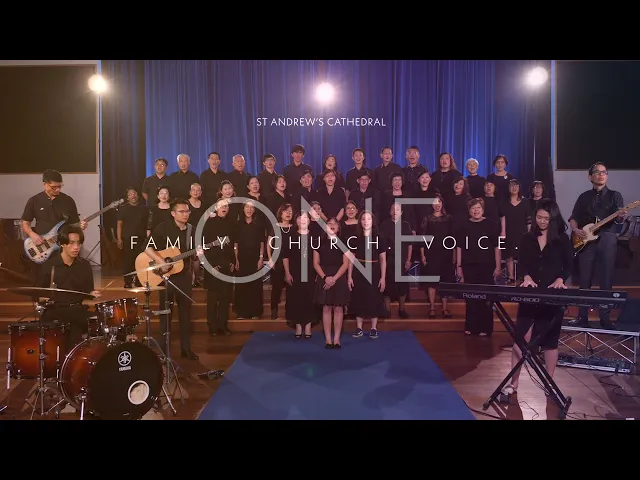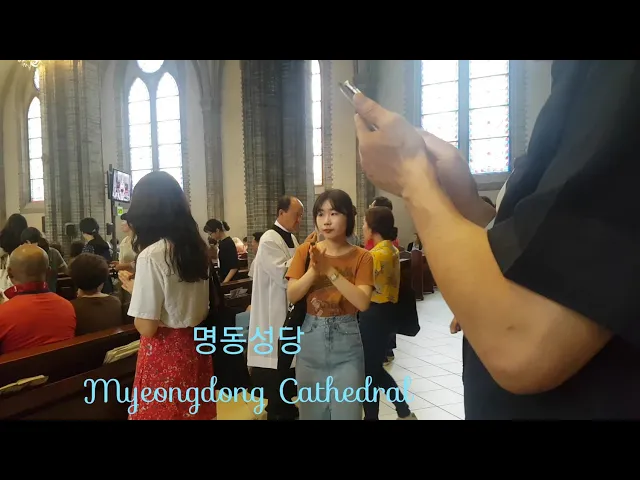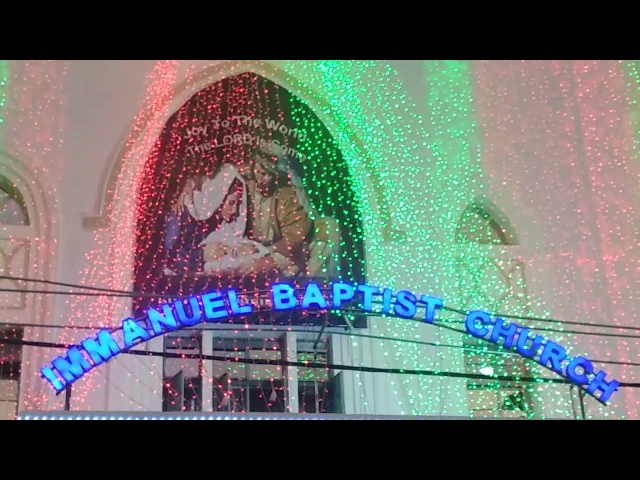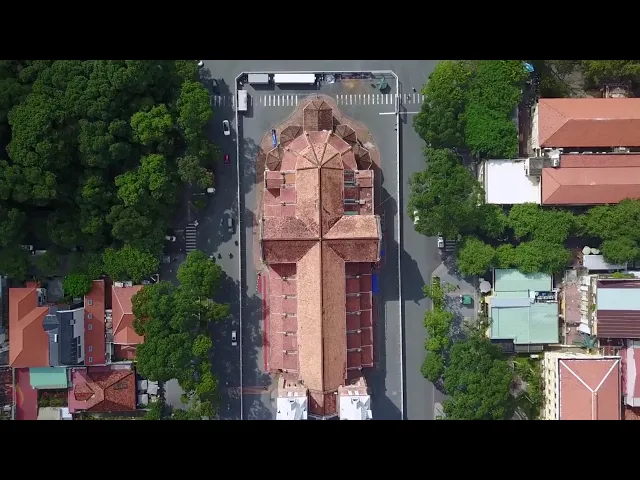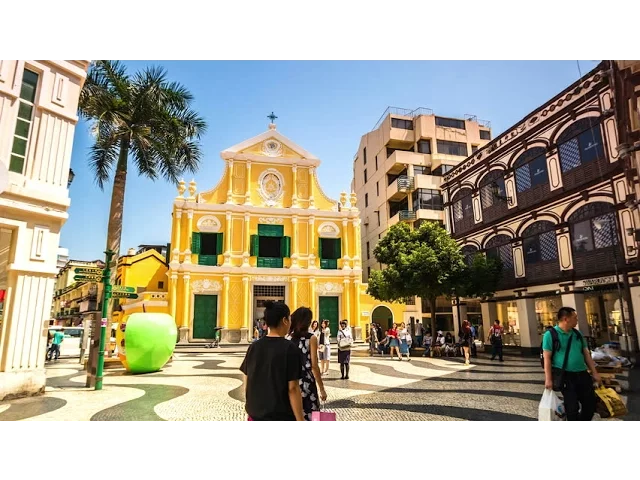Asia’s Biggest Churches: Investigate the historical fabric, religious variety, and architectural marvels of Asia’s largest sanctuaries. Embark on a profound spiritual expedition.
Man held for damaging crosses in Mumbai church’s cemetery; motive unclear
Top 10 Biggest Churches in Asia
S.No |
Biggest Churches in Asia |
Location |
| 1 | Basilica of Bom Jesus | Goa, India |
| 2 | Santa Cruz Church | Bangkok, Thailand |
| 3 | Church of St Paul | Malacca, Malaysia |
| 4 | Malate Church | Manila, Philippines |
| 5 | St Andrew’s Cathedral | Singapore |
| 6 | All Saints’ Church | Galle, Sri Lanka |
| 7 | Myeongdong Cathedral | Seoul, South Korea |
| 8 | Immanuel Baptist Church | Yangon, Myanmar |
| 9 | Notre Dame Cathedral Saigon | Ho Chi Minh City, Vietnam |
| 10 | St Dominic’s Church | Macau |
Most sizable churches in Asia
Asia is home to some of the most magnificent and awe-inspiring cathedrals in the world. Besides being sites of devotion, these colossal structures are also architectural marvels. There are a variety of churches across Asia representing human ingenuity and religious devotion. It’s replete with churches that boast distinct architectural styles, historical significance, and profound social influence. Embark on an expedition to investigate the most expansive sanctuaries in Asia, where the magnificence of architecture and spirituality converge.
1. Bom Jesus Basilica, Goa, India
Bom Jesus Basilica is a UNESCO World Heritage Site and one of the most revered sanctuaries in Old Goa, India. An eminent Jesuit missionary, St. Francis Xavier, is buried in this Baroque-style church that was built in the 16th century. By integrating Doric, Corinthian, and Composite architectural styles, the basilica displays architectural brilliance.
Intricate engravings and sculptures adorn the church’s facade, demonstrating a fusion of Indian and European artistic influences. Visitors are treated to exquisitely decorated interiors and magnificent gilded altars upon entering. Additionally, the Basilica of Bom Jesus represents the cultural convergence in India during colonial times.
2. Thailand’s Santa Cruz Church
Established in the 18th century, the Santa Cruz Church is a historic Catholic structure tucked away in the center of Bangkok, Thailand. This cathedral, alternatively referred to as Kudi Chin, has been an integral part of the local Catholic community’s existence and exemplifies Bangkok’s rich cultural diversity. The architectural design of Santa Cruz Church, characterized by its twin spires and yellow facade, is a fusion of Asian and European influences.
The premises are embellished with vivid frescoes, religious artifacts, and an ambiance that encourages visitors to contemplate and value the cultural harmony that permeates this dynamic metropolis. The Santa Cruz community, predominantly of Portuguese descent, has made significant contributions to the conservation of their religious and cultural legacy in the central area of Thailand’s capital, which encompasses the church.
3. St. Paul’s Church in Malacca, Malaysia
Perched atop St. Paul’s Hill in Malacca, Malaysia, the Church of St. Paul is a somber ruin that provides a glimpse into the colonial past of the region. The church, which the Portuguese originally built in the 16th century, underwent a subsequent conversion into a Dutch burial site. Notwithstanding its deteriorating condition, the church continues to be a recognizable landmark due to its weathered façade, which provides insight into bygone eras.
In addition to advantageous panoramic views of Malacca city, ascension to the summit via the staircase yields historical relics. By embodying a sense of antiquity and cultural significance, the Church of St. Paul poignantly recalls the ebb and flow of colonial powers in Southeast Asia.
4. Church of Malate, Manila, Philippines
The historic Our Lady of Remedies Parish Church, also referred to as Malate Church, is situated in the central business district of Manila, Philippines. Since its founding in 1588, the church has been a witness to centuries of Philippine history and an intrinsic component of the nation’s religious and cultural fabric. Having undergone multiple reconstructions in response to natural catastrophes and wars, the present edifice exemplifies a seamless fusion of Baroque and Neoclassical architectural influences. Intricate statues and carvings adorn the facade, enhancing its aesthetic allure. The interior of the church is adorned with exquisite stained glass windows, a lavishly decorated altar, and a tranquil ambiance that promotes introspection and prayer. Malate Church serves as a magnificent architectural specimen that embodies the Philippines’ enduring spiritual heritage and is steeped in history.
Malate Church attracts frequent visitors not only for its religious import but also for its cultural and community activities. The church assumes an integral role in numerous philanthropic endeavors and community engagement initiatives, thereby serving as a center for social and spiritual assemblies. The church’s advantageous location in the bustling neighborhood of Malate, which draws both locals and visitors who want to immerse themselves in the historical and spiritual atmosphere of this renowned landmark in Manila, enhances its accessibility and cultural significance.
5. Singapore St Andrew’s Cathedral
The emblematic Anglican St Andrew’s Cathedral is located in the civic district of Singapore. Constructed during the middle of the 19th century, the cathedral is an exemplary manifestation of the English Gothic Revival style. The craftsmanship of the era is evident in the intricate detailing of the spires, arches, and stained glass windows of the structure. The cathedral has experienced numerous expansions and renovations since its completion in 1861. Situated amidst verdant vegetation and immaculately maintained premises, St Andrew’s Cathedral offers a tranquil sanctuary amidst the fast-paced metropolis of Singapore.
In addition to its remarkable architectural prowess, the cathedral possesses historical importance due to its status as one of the preeminent Anglican churches in Singapore. Throughout the island’s history, it has been transformed into a critical juncture, providing refuge and observation during periods of strife and adversity. St Andrew’s Cathedral continues to function as a vibrant religious hub, facilitating consistent congregational gatherings, community gatherings, and outreach initiatives. By its advantageous positioning within the civic district, it has become a significant cultural and historical icon, attracting visitors and adherents who are intrigued by the architectural and spiritual legacy it symbolizes.
6. Church of All Saints, Galle, Sri Lanka
Departing from the colonial era, All Saints’ Church in Galle, Sri Lanka, boasts an extensive historical legacy that stretches into the 19th century. Constructed throughout the British colonial era, the architectural design of the church is a synthesis of Gothic and Victorian influences. The church’s picturesque location within the Galle Fort, which is a UNESCO World Heritage Site, adds to its allure. Elegant wooden pews, a magnificent altar, and stained glass windows evoking the colonial era adorn the interior. All Saints’ Church functions as a religious edifice for the Anglican community in the area and is a testament to the colonial history of Sri Lanka.
In addition to withstanding the test of time, the church has significantly influenced the religious and cultural landscape of Galle. An enchanting atmosphere further entices visitors to the church, in addition to its historical and architectural merits. Featuring ancient tombstones and a verdant garden, the churchyard offers a serene sanctuary for introspection. All Saints’ Church remains a vibrant religious institution, hosting a variety of events, including regular services. Its spiritual significance and cultural heritage designation make it a mandatory stop for Galle visitors.
7. Myeongdong Cathedral [South Korea] in Seoul
Situated in the central area of Seoul, South Korea, Myeongdong Cathedral, formally recognized as the Cathedral Church of the Virgin Mary of the Immaculate Conception, stands as a conspicuous landmark. Constructed in the Gothic architectural style, this Catholic cathedral is historically significant due to its status as Korea’s inaugural parish church.
During the late Joseon Dynasty, construction of the cathedral commenced in 1892; throughout the years, it underwent numerous renovations and expansions. Elegaciously ascending, the twin spires of Myeongdong Cathedral distinguish it as a prominent element within the Seoul skyline. Religious artwork, exquisite stained glass windows, and intricate woodwork adorn the interior. The cathedral functions as a sanctuary for the Catholic community and also draws in travelers and individuals with an interest in South Korean history who are curious about the country’s rich cultural legacy.
8. Additionally, the Immanuel Baptist Church in Yangon, Myanmar
The Yangon, Myanmar-based Immanuel Baptist Church is an architectural marvel and a major religious institution in the nation. The chapel serves as an edifice that celebrates the lasting impact of Christianity in Myanmar. Built during the British colonial period in the late 19th century, Immanuel Baptist Church showcases a fusion of Gothic and Romanesque architectural influences.
Owing to its red-bricked facade, pointed arches, and intricate exterior detailing, this structure is both aesthetically captivating and culturally significant. The church was a key witness to colonial events in Myanmar and a symbol of perseverance. Immanuel Baptist Church still draws worshippers with its stunning architecture and historical significance.
9. Ho Chi Minh City, Notre Dame Cathedral Saigon, Vietnam
Notre Dame Cathedral Saigon, a French colonial-era Catholic church in Ho Chi Minh City, Vietnam, represents the city’s culture and religion. The cathedral was built in the late 19th century using French elements, including its famous red brickwork.
Standing at a remarkable height of 58 meters, the twin structures establish themselves as a prominent feature of the skyline. Visitors are treated to exquisite stained glass windows and religious statues within. Notwithstanding the obstacles encountered, such as the detrimental effects of the Vietnam War, Notre Dame Cathedral Saigon has persevered through restoration endeavors, thereby safeguarding its architectural and historical import. It continues to be a bustling center of devotion and an essential stop for individuals interested in examining the dynamic metropolis.
10. Macau’s St Dominic’s Church
The St Dominic’s Church, located in the historic core of Macau, is an enchanting illustration of Baroque-influenced Portuguese colonial architecture. Established during the early 17th century by Spanish Dominican clergy, the church bears the sanctity of St. Dominic and is characterized by a visually striking yellow façade embellished with elaborate carvings and white masonry. The interior is likewise splendid, showcasing exquisite religious artwork and an ornately adorned altar.
As part of the Historic Centre, St Dominic’s Church, a UNESCO World Heritage Site, represents Macau’s mix of Eastern and Western cultures. The church in Macau is a popular destination due to its history, architecture, and religious significance.
How Do the Churches of Asia Serve as a Reflection of Cultural and Religious Diversity?
Asia, a continent renowned for its extensive religious and cultural heterogeneity, exhibits an intriguing assortment of churches that mirror the region’s multitude of religions and traditions. Every church serves as an embodiment of the harmonious cohabitation and profound assimilation of diverse religious traditions and cultures. The historical contexts, architectural designs, and religious observances of these sanctuaries offer insights into the diverse cultural legacy of Asia.
Asia’s churches effectively manifest cultural and religious diversity through a noteworthy feature—the remarkable variety in architectural styles. St Dominic’s Church in Macau has Baroque and Romanesque elements, whereas Myeongdong Cathedral in South Korea has complex Gothic embellishments. This wide range of styles is a product of the interaction between foreign influences and indigenous customs. Monuments that narrate tales of cultural exchange and assimilation are distinctive due to the amalgamation of indigenous and colonial elements.
Asian churches are also hubs for religious celebrations that reflect the region’s many faiths. The Catholic Notre Dame Cathedral Saigon in Vietnam, the Baptist Immanuel Baptist Church in Myanmar, and the Christian populations in India and the Middle East use these churches as spiritual centers. People in Asia observe religious practices that vibrantly weave together rituals, ceremonies, and festivals within these sacred spaces.
Big Asian churches have deep roots in the region’s history and reflect how religious perspectives have changed. These churches witnessed the succession of empires, colonial rule, and freedom struggles, capturing the history of their people. Conservation and renovation of these ancient places emphasize the importance of honoring Asia’s cultural and religious heritage.
Due to their unique architecture, religious practices, and historical significance, Asian churches represent the continent’s cultural and religious variety. These churches strengthen community identity and show Asia’s complex cultural fabric via culture and faith.

